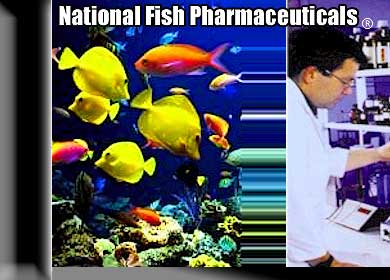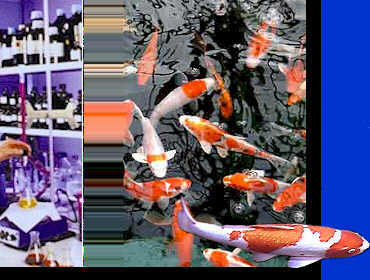|
|
Fish Intestinal Disorders
|
Symptoms
|
|
Cause
|
|
Treatment and Links
|
| A). The intestines contain opaque
worms possessing a retractible proboscis or trunk completey
covered with hooking structures |
 |
The fish is affected with acanthocephalans. |
 |
Treat fish with
Paracide-D in the food. |
 |
|
| B). Hanging on the intestinal wall
are worms with anterior sucking parts and well defined
segmentation. They can attain several centimeters in
length. |
 |
The fish are affected with Tapeworms |
 |
Treat the fish with:
Paracide-D. |
 |
|
| C). Flatworms with an anterior and a
posterior sucker are attached to the intestinal wall (but almost
only in fish captured in the wild). |
 |
Digenea are trematodes or flukes with
alternating hosts, so they cannot reproduce in an aquarium |
 |
Treat with: Paracide-D
or Paracide-X |
 |
|
| D). Reddish worms, 10 to 20mm long
with "milling or cutter head"-like mouth parts |
 |
Nematodes of the genus Camallanus are involved |
 |
Treat with
Paracide-D |
 |
|
| E). Long, very thin worms (up to
20mm long) move slowly in the intestines. Many eggs appear
too, with female specimens |
 |
Your fish are affected with Capillaria |
 |
Treat fish with
Paracide-D mixed into feed |
 |
|
| F). In cysts embedded in the
intestinal wall, curled up worms move very slowly |
 |
You have found encapsulated Nematode Larvae |
 |
Treat with
Paracide-D. |
 |
|
| G). Large, thick worms (1 to 4mm)
wriggle in the intestine. Only Discus fish are known to
have these |
 |
These oxyruids have not yet been properly
identified |
 |
Treat with:
Paracide-D mixed into the feed at 1/4 tsp. per 1/2lb. of
food. |
 |
|
| H). Relatively large protozoans
which swim around in the intestinal contents, have slightly
angled-off round anterior ends and a posterior end drawn out to
a point |
 |
The fish is affected with Protoopalina.
These are found only in discus fish. |
 |
Make a medicated frozen food with
Metronidazole. Use 1/2 tsp. to 4oz. of food. Thaw
food, mix in medication and re-freeze. Feed to fish for 10
days. |
 |
|
| I). Reddish spots appear in the
intestinal wall. At high magnifications, blood cells can
be recognized |
 |
This involves enteritis or viral infection |
 |
No suitable treatment known. |
 |
|
| J). The intestine contains yellow
fluid and yellow crystalline structures |
|
The crystals are called enterolith crystals,
which appear when the fish has not fed for a long time.
They are often secondary to many diseases |
|
Try to have the other fish start feeding again
by offering them live food. Examine dissected fish for
other diseases. |
| |
|
Home
ı
Articles ı
Prevention ı
Fish
Diseases ı
About Us ı
Contact Us ı
Terms of Use ı
Privacy Policy ı
Shipping ı
Products |


 .
.